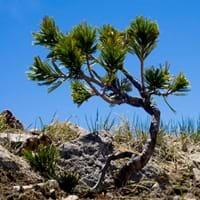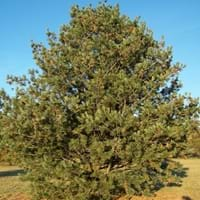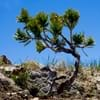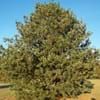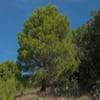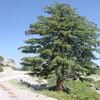Life Span
Perennial
Perennial
Type
Needled or Scaled Evergreen
Needled or Scaled Evergreen
Origin
Western United States, Canada
Western United States, Canada, Mexico
Types
Not Available
Pinus albicaulis, Pinus monticola
Number of Varieties
Not Available
Habitat
Woodland Garden Canopy
Dry areas
USDA Hardiness Zone
4-8
3-7
Sunset Zone
Not Available
A1, A2, A3, 1a, 1b, 2a, 2b, 3a, 3b, 4, 5, 6, 7, 8, 9, 10, 11, 14, 15, 16, 17, 18, 19, 20, 21
Habit
Oval or Rounded
Oval or Rounded
Flower Color
Deep Red, Pink, Purple
Not Available
Flower Color Modifier
Bicolor
Bicolor
Fruit Color
Brown
Not Available
Leaf Color in Spring
Not Available
Green, Blue Green
Leaf Color in Summer
Not Available
Green, Blue Green
Leaf Color in Fall
Not Available
Green, Blue Green
Leaf Color in Winter
Not Available
Green, Blue Green
Leaf Shape
Needle like
Needle like
Plant Season
Spring, Summer, Fall, Winter
Spring, Summer, Fall, Winter
Sunlight
Full Sun
Full Sun
Type of Soil
Loam, Sand
Loam, Sand
The pH of Soil
Acidic, Neutral
Acidic, Neutral
Soil Drainage
Well drained
Well drained
Bloom Time
Early Spring, Late Spring, Mid Spring
Not Available
Tolerances
Drought
Drought
Where to Plant?
Ground
Ground
How to Plant?
Cuttings, Seedlings
Grafting
Plant Maintenance
Medium
Low
Watering Requirements
Needs watering once a week
Do Not over Water, Requires regular watering
In Summer
Lots of watering
Regular watering required
In Spring
Moderate
Moderate
In Winter
Average Water
Average Water
Soil pH
Acidic, Neutral
Acidic, Neutral
Soil Type
Loam, Sand
Loam, Sand
Soil Drainage Capacity
Well drained
Well drained
Sun Exposure
Full Sun
Full Sun
Pruning
Remove damaged leaves, Remove dead branches, Remove dead leaves
Prune if you want to improve plant shape
Fertilizers
Fertilzer with low nitrogen content
All-Purpose Liquid Fertilizer, Less fertilizing
Pests and Diseases
Mountain pine beetle, White pine blister rust
Rust
Plant Tolerance
Drought
Drought
Flower Petal Number
Single
Single
Fragrant Bark/Stem
No
Yes
Foliage Texture
Not Available
Fine
Foliage Sheen
Glossy
Not Available
Attracts
Nutcrackers
Not Available
Allergy
Hay fever, Rhinitis
no allergic reactions
Aesthetic Uses
Not Used For Aesthetic Purpose
Showy Purposes
Beauty Benefits
Not Available
No Beauty Benefits
Environmental Uses
Air purification
Wildlife, Windbreak
Medicinal Uses
Antiseptic, Diuretic, Vermifuge
No Medicinal Use
Part of Plant Used
Inner Bark, Seeds
Bark
Other Uses
Used as a thickener in soups, Used for making green dye, Used to flavour soups
used for making roof trusses, poles, joists, piles, Used in construction, Wood is used for making furniture
Used As Indoor Plant
No
No
Used As Outdoor Plant
Yes
Yes
Garden Design
Screening, Wind Break
Feature Plant, Screening, Wind Break
Botanical Name
PINUS albicaulis 'Glauca'
PINUS flexilis
Common Name
Whitebark Pine, White Pine, Pitch Pine
limber pine
In Hindi
Whitebark Pine
limber pine
In German
Whitebark Pine
limber pine
In French
Pin à écorce blanche
limber pine
In Spanish
Whitebark pino
limber pine
In Greek
Whitebark Pine
εύκαμπτος πεύκο
In Portuguese
Whitebark Pine
limver foi
In Polish
Whitebark Pine
limver poszedł
In Latin
Pinus albicaulis
limver abiit
Phylum
Coniferophyta
Tracheophyta
Class
Pinopsida
Pinopsida
Clade
Not Available
Not Available
Tribe
Not Available
Not Available
Subfamily
Pinoideae
Not Available
Number of Species
Not Available
Not Available
Difference Between Whitebark Pine and Limber Pine
If you are confused whether Whitebark Pine or Limber Pine are same, here are some features about those plants to help you choose better. Many people think that these two plants have the same characteristics, but one can see Whitebark Pine and Limber Pine Information and learn more about it. Fertilizers required for proper growth of Whitebark Pine are Fertilzer with low nitrogen content, whereas for Limber Pine fertilizers required are All-Purpose Liquid Fertilizer and Less fertilizing. Hence, one should know the basic difference between Whitebark Pine and Limber Pine if you are planning to have them in your garden to enhance its beauty.
<
Flowering PlantsImportance of Whitebark Pine and Limber Pine
Want to have the most appropriate plant for your garden? You might want to know the importance of Whitebark Pine and Limber Pine. Basically, these two plants vary in many aspects. Compare Whitebark Pine and Limber Pine as they differ in many characteristics such as their life, care, benefits, facts, etc. Every gardener must at least have the slightest clue about the plants he wants to plant in his garden. Compare their benefits, which differ in many ways like facts and uses. The medicinal use of Whitebark Pine is Antiseptic, Diuretic and Vermifuge whereas of Limber Pine is No Medicinal Use. Whitebark Pine has beauty benefits as follows: Not Available while Limber Pine has beauty benefits as follows: Not Available.
Compare Facts of Whitebark Pine vs Limber Pine
How to choose the best garden plant for your garden depending upon its facts? Here garden plant comparison will help you to solve this query. Compare the facts of Whitebark Pine vs Limber Pine and know which one to choose. As garden plants have benefits and other uses, allergy is also a major drawback of plants for some people. Allergic reactions of Whitebark Pine are Hay fever and Rhinitis whereas of Limber Pine have no allergic reactions respectively. Having a fruit bearing plant in your garden can be a plus point of your garden. Whitebark Pine has no showy fruits and Limber Pine has no showy fruits. Also Whitebark Pine is not flowering and Limber Pine is not flowering . You can compare Whitebark Pine and Limber Pine facts and facts of other plants too.
